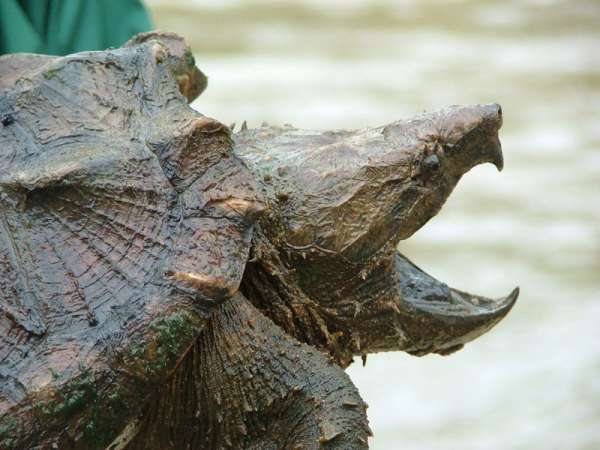
Alligator snapping turtle. Photo by Gary Tucker, USFWS.
|
Largest Freshwater Turtle in North America Threatened by Habitat Destruction, Trapping Across Midwest, Southeast
ST. PETERSBURG, Fla.— Following a petition and legal victory from the Center for Biological Diversity, the U.S. Fish and Wildlife Service Monday proposed protecting the alligator snapping turtle under the Endangered Species Act as a threatened species.
This prehistoric-looking freshwater turtle is known for its spiked shell, strong, beaked jaws and worm-like tongue for luring fish. The alligator snapper faces a predicted 95% decline in 50 years and may be doomed to extinction in as few as 30 years under even the most optimistic predictions.
“Alligator snappers are some of the fiercest, wildest creatures in the Southeast, but overexploitation and habitat destruction have put their lives on the line,” said Elise Bennett, a Center attorney. “These freshwater giants will get a real shot at survival and recovery with the help of the Endangered Species Act and its lifesaving protections.”
Habitat degradation, historical overharvest and ongoing capture have caused significant population declines in the once-abundant turtle. Early in the 20th century, alligator snapping turtles were plentiful in river systems draining into the Gulf of Mexico, from the waterways and lakes of the Midwest to the swamps and bayous of Florida, Louisiana and Texas. But the Service found that the species’ range has since contracted in Illinois, Kansas, Kentucky, Missouri, Tennessee and possibly in Oklahoma.
In addition to habitat destruction, the turtles face threats from illegal and legal trapping in states like Missouri and Alabama, entanglement in and ingestion of fishing gear, nest predation by predators like raccoons, and climate change. Existing regulations aren’t adequate to protect the turtles.
Trapping is particularly damaging because turtles have low fertility, low egg and hatchling survival, and delayed maturity. This means their survival depends on many adult turtles having many opportunities to mate over a long period. Endangered Species Act protection should help stop further trapping.
The Service also proposed a “4(d) Rule” that prohibits the “taking” of alligator snapping turtles. That would include harassing, harming, killing and capturing them. Unfortunately, the rule also provides exceptions for pesticide and herbicide use, certain bridge and dam construction activities and forestry operations, and maintenance dredging of existing channels in waterways.
“Habitat loss is a significant threat to alligator snappers, and these exceptions could significantly hamper the species’ survival and recovery,” said Bennett. “We’ll be taking a close look at this rule and the decision to list the turtle as threatened rather than endangered, which allows the rule.”
The Service also concluded that it is not yet able to designate critical habitat for the turtle because it lacks sufficient information at this time. The agency has a year to publish a critical habitat determination for the species.
Historically the alligator snapping turtle was considered a single species, but more recent research supported splitting off the genetically distinct Suwannee alligator snapping turtle, which is found in its namesake Suwannee River basin in southern Georgia and northern Florida, as a separate species. The Service also proposed protecting the Suwannee alligator snapping turtle under the Endangered Species Act as a threatened species in April 2021.
The Center for Biological Diversity is a national, nonprofit conservation organization with more than 1.7 million members and online activists dedicated to the protection of endangered species and wild places.